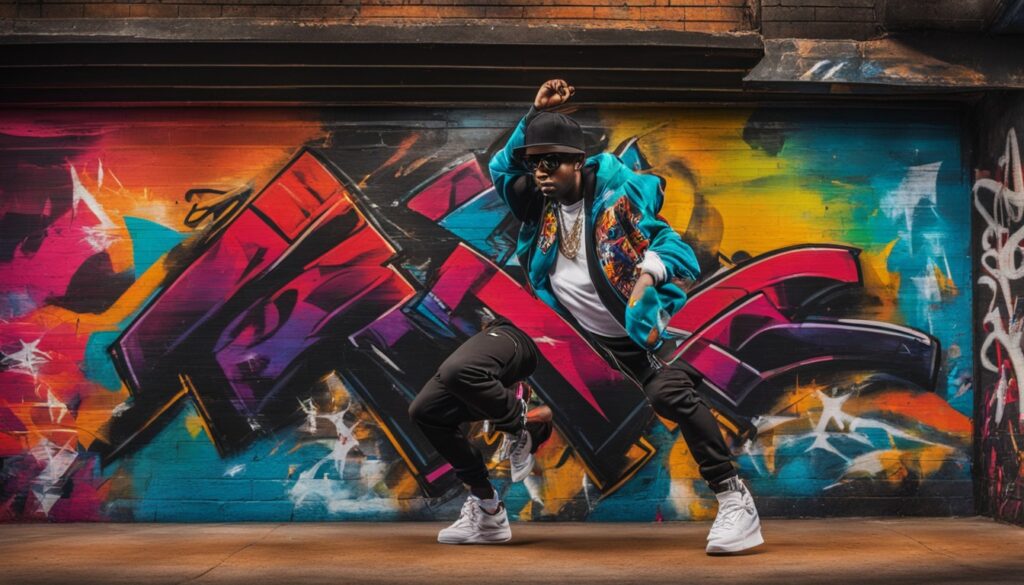The song “Cotton Eyed Joe” by Rednex is a modern take on an old American folk tune. It’s full of mystery and debate. People are drawn to its catchy beats and strange words. They wonder who Cotton Eyed Joe is. This character is usually shown with crossed eyes, a flat nose, and missing teeth. His arrival seemed to ruin the singer’s chance to get married.
The song’s magic also comes from its rich history. Historical records show it dates back to the 1920s. Over time, it has had many versions, from slow, sad tunes to upbeat dances. Artists like Michelle Shocked found inspiration in its themes. They kept the traditional feel in their music. Also, the phrase “cotton-eyed” has led to many guesses, including cataracts and blue eyes. This adds depth to its story.
The Rednex version keeps people dancing with its lively beat. It is often played at baseball games and parties. The charm of “Cotton Eyed Joe” comes from its mix of history, cultural impact, and the mystery of its lyrics.
Explore the fascinating world of “Cotton Eyed Joe.” It’s a song that feels both known and unknown. Its beginnings lead to various stories and cultural insights.
Key Takeaways
- The song “Cotton Eyed Joe” has roots dating back to at least the 1920s.
- Rednex’s version of the song brought a lively, danceable rhythm to the folk tune.
- Interpretations of “cotton-eyed” include references to cataracts and blue eyes.
- The song has versatility, reflected in its adaptations from slow ballads to energetic dances.
- Michelle Shocked’s “Prodigal Daughter” aligns rhythmically with “Cotton Eyed Joe,” showcasing its influence on modern music.
The Origin of Cotton Eyed Joe
The song “Cotton Eyed Joe” has deep roots in 19th-century American culture. It is a traditional folk song that has won hearts around the world. Its history goes back before the American Civil War. Knowing about its origins helps us understand why it is still loved today.
Historical Background
The song has been part of American folklore since the 1800s. First published in 1882 by Harper and Brothers, it quickly became popular in the South. By 1884, it was known as an “old, familiar air,” showing it was widely loved back then.
Through the years, many artists have made their versions, adding to its legacy. Adolph Hofner’s 1941 rendition is very famous. Al Dean’s 1967 instrumental version, which led to a polka dance, marked another key moment for the song.
| Year | Artist | Significant Contribution |
|---|---|---|
| 1882 | Harper and Brothers | First printed version |
| 1927 | Dykes Magic City Trio | Earliest recorded version |
| 1941 | Adolph Hofner | Raised popularity |
| 1967 | Al Dean | Inspired polka dance |
| 1994 | Rednex | Popular techno cover |
Earliest Known Versions
The first recording by the Dykes Magic City Trio was in 1927. This version is a key part of the song’s history. Dorothy Scarborough’s work in 1925 also provides important details about the song’s story.
The song has changed a lot over time, moving into different styles of music. The Moody Brothers got a Grammy nomination in 1985 for their country version. Then, The Chieftains got a nomination in 1992, mixing the folk song with other influences.
Cultural Significance of Cotton Eyed Joe
“Cotton Eyed Joe” is an important part of American folklore. It shows deep cultural roots and enduring appeal. It crosses time and places. Its mix of storytelling and rhythm has made it key in American folk music.
Impact on American Folk Music
The cotton eyed joe cultural significance in American folk music is huge. Beginning before the Civil War, “Cotton Eyed Joe” connects to the experiences of enslaved people. It shows the resilient spirit of American folk traditions. Over time, artists like Bob Wills and Nina Simone added their own touches.
The song’s adaptability and relevance are remarkable. When Rednex covered it in 1994, “Cotton Eyed Joe” gained worldwide fame. This shows its lasting appeal across different cultures.
Role in Regional Dances
“Cotton Eyed Joe” is crucial in regional dances, especially in the Southern US. Its lively beat and distinct rhythm make it a dance favorite. It’s played at sports events, weddings, and cultural festivals. This shows its significant impact.
The song’s fun melody encourages people to join in, making it great for dances. This keeps “Cotton Eyed Joe” alive in celebrations and shared traditions.
Including American folk music traditions in modern versions of “Cotton Eyed Joe” reminds us of its history. The song’s evolution from its origins to today highlights the power of music. It connects generations and communities while keeping regional dances and folklore alive.
| Year | Artist | Version Details |
|---|---|---|
| 1925 | Traditional | Pre-Civil War ballad as documented by folklorist Dorothy Scarborough. |
| 1946 | Bob Wills | Western swing version bringing the song into the 20th century. |
| 1959 | Nina Simone | Jazzy interpretation, showcasing the song’s versatility. |
| 1994 | Rednex | Eurodance rendition, achieving global success and renewed popularity. |
Lyrics Analysis of Cotton Eyed Joe
The song “Cotton Eyed Joe” by Rednex is more than just a fun tune. It has a complex story. An analysis of Cotton Eyed Joe shows it talks about love, betrayal, and sadness. By looking into the Cotton Eyed Joe lyrics, we find a story influenced by history and culture.
Breakdown of Verses
The lyrical breakdown of “Cotton Eyed Joe” shares a sad story. The singer misses his loved one, taken by Joe. The lyrics show his sorrow and confusion, with Joe not being handsome. This sadness is repeated, making us feel the singer’s pain and confusion.
Some think the term “cotton-eyed” could mean blue eyes or something racial. This unclear origin makes us think more about the song. As the song changed over time, it also changed in meaning with society and culture.
- The song predates the Civil War, with origins tied to the period between 1800 and 1860.
- As a folk song, it has traveled through generations, shaped by the oral tradition and adapted by different musicians like Rednex.
- Rednex’s adaptation peaked at number 25 on the Billboard charts in May 1995.
Themes and Motifs
Looking at the themes and motifs in the Cotton Eyed Joe lyrics, we see its deep meanings. It tells a touching story of love and loss against hard historical times. The song talks about betrayal, sadness, and comments on society as it goes on.
| Theme | Motif | Explanation |
|---|---|---|
| Love and Betrayal | Loss of Beloved | The narrator’s sorrow over losing his partner to Joe. |
| Historical Context | Racial Terminology | References to “cotton-eyed” and its implications. |
| Emotional Turmoil | Repetitive Sorrow | The chorus’s repetition highlights enduring heartache. |
“Cotton Eyed Joe” has many layers, leading to discussions about its cultural and historical meanings. This song interpretation shows how simple lyrics can have deep, sometimes tough, stories. A good analysis of Cotton Eyed Joe lets us see the rich storytelling and lasting impact of the song.
Who is Cotton Eyed Joe?
The mysterious figure known as Cotton Eyed Joe has puzzled people for over a hundred years. Many wonder, “Who is Cotton Eyed Joe?” and what does “cotton-eyed” mean? Several theories aim to explain the history and identity of this character, offering various insights into his story.
One theory suggests “cotton-eyed” refers to blue-eyed African Americans. This idea brings a racial aspect to the character, especially since the song dates back to before the Civil War. It was originally linked to caricatures of enslaved people on plantations. This connection shows the disturbing origins hidden in the song’s catchy tune.
Another idea presents Joe as charming but troubling, particularly to other men’s partners. This view became popular after Rednex’s 1990s cover, putting Cotton Eyed Joe back in the spotlight. The band’s version sparked fresh debates and interest in Joe’s story and the mysterious identity behind the name.
Yet, Cotton Eyed Joe’s true nature is still a mystery, which adds to the song’s appeal. Stories vary, depicting Joe as anything from a runaway slave to a field worker with unique eyes. These tales highlight a complex character that lives on in folklore and memory. As discussions continue, Cotton Eyed Joe remains a symbol of how folklore can influence and mirror our values.
FAQ
What is the meaning behind Rednex’s “Cotton Eyed Joe”?
Rednex’s “Cotton Eyed Joe” comes from an old American folk song. It tells a story of love, betrayal, and sadness. The singer talks about losing his love to Joe.
What are the origins of “Cotton Eyed Joe”?
The song dates back to the 19th century, rooted in American folklore. By 1884, it was already known as an “old, familiar air.” Folklorist Dorothy Scarborough recorded it in 1925, sharing it widely.
How has “Cotton Eyed Joe” impacted American folk music?
It’s a key piece in American folk music for its mixture of storytelling and rhythm. It’s often played at folk dances, showing how cultures mixed over time.
What role does “Cotton Eyed Joe” play in regional dances?
It’s a big part of Southern dance traditions in the U.S. The song is a favorite at folk dances and social events, showing its importance in culture.
What do the lyrics of “Cotton Eyed Joe” signify?
The lyrics tell a tale of regret and lost love due to Joe. They touch on feelings of love, betrayal, and Joe’s strange charm despite how he looks.
Who is Cotton Eyed Joe?
Cotton Eyed Joe is a mysterious figure in the song. Described oddly, he’s thought to charm people and mess up relationships. Some think the term “cotton-eyed” may have deeper meanings.
What theories exist about the term “cotton-eyed”?
“Cotton-eyed” could mean blue-eyed African Americans or someone who flirts with others’ partners. These interpretations make the character even more intriguing.
How has Rednex’s version popularized “Cotton Eyed Joe”?
Rednex brought the song back into the spotlight in the 1990s. Their version made people talk about Joe’s story and its meanings again.


